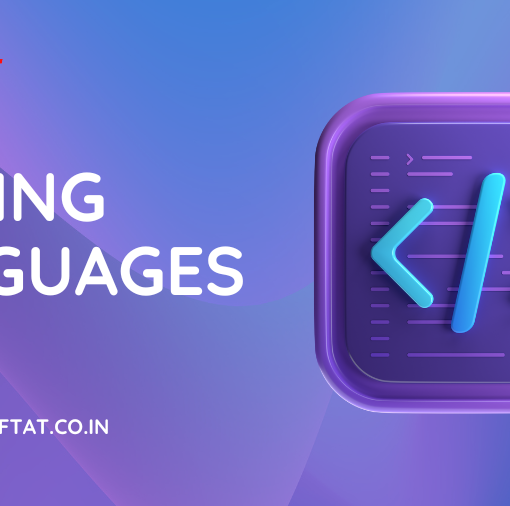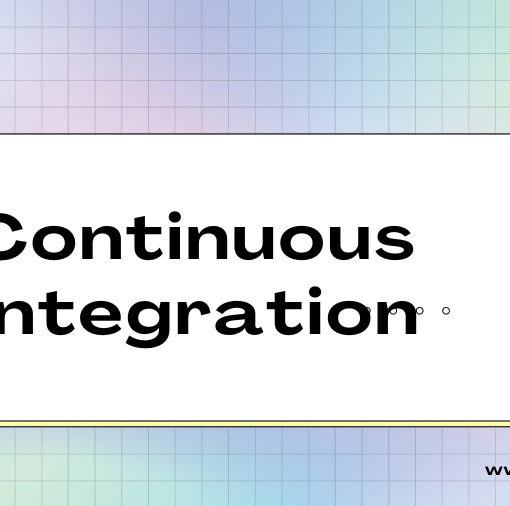In a world progressively determined by innovation and computerized collaborations, conventional strategies for learning, commitment, and inspiration are quickly supplanted by additional imaginative methodologies. One such methodology that has acquired colossal prevalence is gamification. Gamification, which includes consolidating game-plan components in non-game settings, has changed enterprises going from schooling and business to medical care and promoting. In any case, what precisely is the primary motivation behind gamification, and how might it help different areas? This blog will dig into the center reason for gamification, its applications, benefits, and driving commitment and motivation potential.
What is Gamification?
At its center, gamification alludes to the utilization of game mechanics — like focuses, identifications, competitor lists, difficulties, and prizes — in conditions where they wouldn’t regularly be utilized, like in learning, work, advertising, or client commitment. The thought isn’t to transform exercises into games as such, but instead to utilize the rules that make games convincing and apply them to various everyday issues. By coordinating game-like components into non-gaming settings, gamification looks to make exercises more charming, propelling, and fulfilling.
Key Elements of Gamification
- Focuses: Clients acquire focuses for finishing jobs, accomplishing objectives, or partaking in exercises.
- Identifications: Visual portrayals of accomplishments or progress.
- Competitor lists: Rankings that analyze members’ exhibitions, encouraging contest.
- Challenges/Journeys: Explicit undertakings or missions that should be finished inside a set time period.
- Rewards: Impetuses for finishing jobs, like awards, endorsements, or virtual merchandise.
The Main Purpose of Gamification
The main role of gamification is to upgrade inspiration, commitment, and interest by making non-game exercises more charming and fulfilling. It accomplishes this by presenting game mechanics that urge individuals to connect all the more profoundly with a movement, whether that is mastering another expertise, accomplishing business objectives, or communicating with an item or administration.
- Inspiration
Gamification takes advantage of characteristic and outward inspiration. Characteristic inspiration alludes to the interior craving to participate in a movement for happiness or satisfaction, while extraneous inspiration includes outer rewards like cash, acknowledgment, or prizes. By offering prizes and acknowledgment for accomplishments, gamification gives both inborn and extraneous motivators that propel individuals to connect all the more completely with an action.
For instance, in an instructive setting, an understudy may be roused by the craving to procure an identification for getting done with a difficult responsibility or by the acknowledgment on a list of competitors that shows how they contrast with their friends. Essentially, in a business setting, representatives might be spurred to get done with jobs or arrive at targets when their advancement is recognized through focuses or compensates.
- Commitment
Commitment is one more basic objective of gamification. It urges individuals to take part more effectively and reliably in exercises that they could some way or another see as dreary or unsatisfying. When gamified components like difficulties, focuses, and rivalry are incorporated into exercises, they make the experience more powerful and intuitive, consequently helping commitment.
For example, in a learning climate, gamified eLearning courses consolidate tests, identifications, and progress following to keep up with understudy commitment all through the course. The utilization of lists of competitors and intelligent difficulties likewise keeps up with student interest by presenting a feeling of contest and movement.
- Further developed Learning and Maintenance
Gamification can essentially improve advancing by making the cycle more intuitive, fun, and vivid. By integrating difficulties, tests, and rewards, students are bound to remain connected with and hold data. The moment criticism gave by gamified learning frameworks additionally builds up advancing by permitting students to recognize regions for development continuously.
This is especially valuable in corporate preparation conditions, where workers can be roused to partake in preparing programs, and the growing experience can be made really captivating through games, reproductions, and award frameworks. These components make the growth opportunity more agreeable as well as assist with supporting information maintenance by empowering practice, redundancy, and self-appraisal.
- Conduct Change
Gamification can likewise be a compelling device for driving conduct change. By compensating wanted ways of behaving and giving quick input, gamification builds up sure activities and puts unfortunate ones down. Whether it’s uplifting better propensities, rousing workers to perform better, or advancing brand dedication, gamification utilizes the force of remunerations and acknowledgment to impact conduct.
For instance, in the wellness business, gamified applications keep tabs on clients’ development, reward them for accomplishing achievements, (for example, running a specific number of steps or calories consumed), and offer difficulties to keep them propelled. This supports proceeded with investment as well as cultivates a feeling of achievement and improvement.
- Social Cooperation and Coordinated effort
In numerous gamified frameworks, members are urged to team up, share progress, and rival others, encouraging a feeling of local area. The presentation of group difficulties, social sharing choices, and cooperative objectives establishes a climate of friend learning and common help.
In corporate settings, gamification advances cooperation by empowering workers to team up and procure awards for aggregate accomplishments. Essentially, in instructive settings, understudies can cooperate in groups to finish difficulties or undertakings, which encourages joint effort and social collaboration.
Applications of Gamification
Gamification has been successfully implemented in a wide range of industries, including:
- Training and eLearning
In instructive settings, gamification is progressively used to further develop understudy commitment and learning results. Instructors and organizations are utilizing game components like identifications, competitor lists, and difficulties to rouse understudies and improve the opportunity for growth. Learning stages like Kahoot!, Duolingo, and Quizlet have embraced gamification to make concentrating on more intelligent and fun.
By separating examples into little, feasible assignments and compensating understudies for their advancement, gamification assists with keeping up with inspiration and lifts long haul maintenance of information.
- Corporate Preparation and Worker Commitment
In the corporate world, gamification is utilized for preparing, worker advancement, and improving efficiency. Organizations use gamified frameworks to make preparing programs seriously captivating and to urge workers to effectively take an interest. Models incorporate making preparing modules with tests and difficulties that reward representatives for finishing responsibilities and accomplishing achievements. Famous instruments for gamifying worker commitment incorporate SAP Litmos, BambooHR, and Salesforce. - Wellbeing and Wellness
The wellness business has broadly embraced gamification to help clients track and work on their wellbeing. Applications like Fitbit, MyFitnessPal, and Strava use gamified components like accomplishments, identifications, and progress following to urge clients to remain dynamic, put forth objectives, and accomplish achievements.
Wellness gamification helps commitment as well as makes a feeling of contest and responsibility, empowering clients to adhere to their wellbeing objectives.
Schooling and eLearning
In instructive settings, gamification is progressively used to further develop understudy commitment and learning results. Educators and organizations are utilizing game components like identifications, lists of competitors, and difficulties to persuade understudies and upgrade the opportunity for growth. Learning stages like Kahoot!, Duolingo, and Quizlet have embraced gamification to make concentrating on more intelligent and fun.
By separating examples into little, feasible errands and compensating understudies for their advancement, gamification assists with keeping up with inspiration and lifts long haul maintenance of information.
- Corporate Preparation and Representative Commitment
In the corporate world, gamification is utilized for preparing, representative turn of events, and upgrading efficiency. Organizations use gamified frameworks to make preparing programs really captivating and to urge representatives to effectively take part. Models incorporate making preparing modules with tests and difficulties that reward representatives for finishing responsibilities and accomplishing achievements. Famous apparatuses for gamifying representative commitment incorporate SAP Litmos, BambooHR, and Salesforce. - Wellbeing and Wellness
The wellness business has generally taken on gamification to help clients track and work on their wellbeing. Applications like Fitbit, MyFitnessPal, and Strava use gamified components like accomplishments, identifications, and progress following to urge clients to remain dynamic, put forth objectives, and accomplish achievements.
Wellness gamification helps commitment as well as makes a feeling of contest and responsibility, empowering clients to adhere to their wellbeing objectives.
- Social Great and Conduct Change
Gamification can likewise be applied to drive positive social change. It is utilized in drives pointed toward empowering harmless to the ecosystem conduct, working on general wellbeing, and advancing admirable missions. Models incorporate applications that reward clients for reusing, chipping in, or partaking in wellbeing efforts, like Foundation Miles or Recyclebank. - Promoting and Client Unwaveringness
Advertisers use gamification to draw in clients and upgrade brand unwaveringness. For instance, dedication projects, for example, Starbucks Prizes and Nike+ urge clients to acquire focuses, identifications, and compensations for buys or commitment with the brand. These gamified unwaveringness programs persuade clients to return and continue drawing in with the brand, consequently driving deals and cultivating long haul connections.
Benefits of Gamification
- Expanded Inspiration and Cooperation
One of the main advantages of gamification is that it increments inspiration. By adding components like prizes and acknowledgment, individuals are bound to draw in with errands they may some way or another view as monotonous or dull. - Further developed Execution and Efficiency
Gamification urges members to drive themselves to accomplish improved results. By consolidating levels, accomplishments, and difficulties, people are inspired to perform better and take a stab at greatness. - Improved Acquiring and Ability Advancement
Gamification further develops information maintenance by making learning intelligent and locking in. It energizes reiteration, practice, and critical thinking in a tomfoolery and dynamic way. - Advances Coordinated effort and Social Association
Gamification encourages cooperation, as members frequently need to team up to accomplish objectives or complete difficulties. This further develops correspondence and joint effort abilities in both instructive and working environment settings.
Conclusion
The main purpose of gamification is to make activities more engaging, motivating, and rewarding by applying game-like elements to non-game contexts. From education and corporate training to marketing and social causes, gamification is transforming the way people learn, work, and interact. By tapping into intrinsic and extrinsic motivation, enhancing engagement, and promoting positive behavioral changes, gamification is becoming an essential tool across various industries.
Whether you’re an educator, business leader, marketer, or developer, understanding the core principles and applications of gamification can help you leverage its potential to drive engagement, improve performance, and achieve success. The future of gamification holds even greater possibilities as technology advances, and its impact continues to grow across all aspects of life.
You may be interested in:
A Deep Dive into SAP API Management
Integration cloud system to HANA Cloud Platform using Cloud Connector





